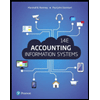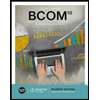Assignment Week 7
.docx
keyboard_arrow_up
School
American Military University *
*We aren’t endorsed by this school
Course
BUSN320 -
Subject
Business
Date
Jan 9, 2024
Type
docx
Pages
5
Uploaded by tdepew84 on coursehero.com
1
Assignment Week 7
Thomas C. DePew
American Military University
BUSN320: Principles of E-Business
Dr. Charles Beverley
20 August 2023
2
Assignment Week 7
When designing an e-business scenario it is certainly important to develop a concise method for analyzing or designing it. However, when it comes to analyzing or designing it mainly deals with monetary proficiency of the e-business. Now there could already be architectures and technology in place that could be used within the scenario upon analyzation of the current business structure. Now in the analyzing steps it could be discovered that there are one or more processes that may be considered excessive and because they are excessive, they need to be removed. On the other hand, some processes just might need a little tweaking or updating in order to run effectively. Now that we have completed the analyzing steps it could be discovered that a complete deconstruction and reconstruction is needed in order to add efficiency to the new processes. Scope determination, scenario classification, global analysis/design, dependency analysis, leading aspect selection, and detailed analysis/design are all considered when developing and acting
upon our concise and clear method. Looking at analyzing or designing an e-business scenario, this starts with the scope of the scenario in terms of parties and activities within those parties (Grefen, 2015)
. Once the
scope of the scenario has been accomplished then it is broken down into categories such as party types, objects, and time scope. Once the scope of the scenario has been determined and the classification is assigned only now can the BOAT analysis and design take place. Once we start with the BOAT aspects the first step is to complete an analysis where the dependencies are analyzed (Grefen, 2015)
. Now that this has been completed, we are analyzing the findings between identified elements and the BOAT aspects (Grefen, 2015)
. From here a comprehensive analysis or design is conducted. Now this should go without
3
saying but within all these steps diagrams or models should be built and used to illustrate the reports. Once the more significant overall aspects have been identified the overall framework they need to be described in greater detail, these aspects are also known as “leading characters”. Now while there is normally only one leading character, there could however be two that emerge post analysis. Scope determination this is where the organization chooses which sub organizations will be included and which ones will not be included, also which activities the organizations
will or will not participate in is decided during this process. When this is all done correctly the organizations will have their orders. If this is not done correctly it is just an empty shell
and the first step needs to be redone for it to work. Time scopes are also completed during this process if the overall time scope presents two very different time scopes, then the scenario was too broad and the first step needs to be redone (Grefen, 2015)
.
Now that we have completed the analysis, we need to put it down on paper somehow. We can do this by using the BOAT element dependency diagram or (BEDD) for short. This diagram describes each element and how they depend on the BOAT framework
individually. Now this is based off the wheel model from BOAT (Grefen, 2015)
so it is easy to understand. It is safe to say that this diagram should be used throughout the entire analysis
process. Your business needs to prepare for the future, how to do this we have to analyze past or future developments. When analyzing past developments, a single pint is chosen let’s call this point A and point B is selected and is present day. This compares the two points by replacing one point with another and compares them. When looking into the future you need to be extremely careful when selecting points in time (now, near, and far
Your preview ends here
Eager to read complete document? Join bartleby learn and gain access to the full version
- Access to all documents
- Unlimited textbook solutions
- 24/7 expert homework help
Related Questions
please help solve. very confused on how to go about this problem. thanks
arrow_forward
you read about the Request for Proposal (RFP), which is issued by an organization interested in purchasing a particular product or service. Companies must provide a response to the RFP in order to be selected to provide the particular product or service.
For this week's discussion, use the attached sample RFP to answer the following questions in preparing a response to the RFP:
1. Create your own company for purposes of this assignment. Provide the name and scope of your company (must fit with this RFP).
2. General Information: Describe your firm’s approach to quality and data integrity regarding the information and
services you provide.
3. General Information: Describe how your company manages workload peaks from a resource perspective.
4. Service Offerings: Please describe your firm’s focus and core competencies.
5. Service Offerings: What distinguishes your company’s capabilities from other firms in your industry?
6. Operating Philosophy: What is your firm’s practice…
arrow_forward
You are required to assess key functions including risk management and compliance for J.P Morgan Chase, and present a written report based on J.P Morgan Chase on the following in 2,000 words:
Risk management framework – Conduct an analysis of the risk management process/ framework implemented at the J.P Morgan Chase (including risk assessment and risk control mechanisms). You are required to report on key risks that the institution is exposed to and explain aspects of the framework, emphasizing the effectiveness of the risk management strategies used.
Anti-Money Laundering and Terrorist Financing Strategies – Discuss with examples, J.P Morgan Chase approaches/ strategies to combat money laundering and terrorist financing issues.
Statutory legislation and compliance - Explain the importance of financial institutions meeting regulatory requirements. Comment on specific legislation that J.P Morgan Chase must be compliant with.
arrow_forward
2. Information poster on differences in responses to loss, grief and bereavement.
In a poster or series of posters that would be suitable to display in a community service facility, identify and discuss the various social, cultural, ethnic and spiritual differences people may experience in responses to loss, grief and bereavement.
arrow_forward
17
The development of an e-government roadmap usually moves through five phases.
Select one:
a. True
b. False
arrow_forward
Q1) Ahmed's interest was cricket. When he finished university, he wanted to work in a management job. He wanted to do his research project on some aspect of general management and social sciences, preferably for a sports goods manufacturer but had no research idea. He asked five friends, all taking business education degrees, to help him brainstorm the problem. You are requested to use the following problem-solving techniques to generate and refine the research idea in this business scenario.
i) The technique of Brainstormingii) The Delphi technique
arrow_forward
Part 1: Conduct research about a U.S. automotive and manufacturing industry and include all required information in the rubric.
Part 2: Conduct research about the industry and specific real world company you selected in week one to obtain data ( Remember the industry and company does not have to be within the automotive and manufacturing industry). Include a Porter's Five Forces diagram. Please select an industry and company that interest you as you will continue to conduct resesrch on the industry and company throughout the course.
Part 3: Compare the U.S. automotive and manufacturing industry to the industry and company you selected. Remember to include a Porter's Five Forces diagram comparing both industries and summarize the findings.
arrow_forward
22
In the portal analysis of strengths’ and weaknesses’ phase of developing an e-government roadmap; the e-government service provider needs to develop a clear understanding of the strengths and weaknesses of the existing e-government portal or solution.
Select one:
a. True
b. False
arrow_forward
What are the key considerations in designing a database for a high-traffic e-commerce website, and how does it differ from a traditional business database?
arrow_forward
Three cases have been posted under the Announcements tab. After reading these cases, think about the following:
at Baylor University, institutional ethics and the behavior of its leaders contributed to violations with Title IX compliance.
accusations from women at Baylor accused athletes of sexual assault that led to indictments and convictions
the university filed motions to dismiss many Title IX lawsuits but all of the motions were denied.
the leaders at Baylor were in a position to address serious accusations but chose to contribute to the problems at the university by not practicing ethical responsibility
Another case which presents HB 2519, is an account of proposed legislation in West Virginia that would permit concealed firemans to be carried in classrooms on college campuses in West Virginia. Reflect on these issues of the case
opposition to the bill, known as the Campus Carry Bill, was strong and resulted in resistance as a leadership style.
the value of resistance as…
arrow_forward
Determine the type of business analytics for the following scenarios.
A. Imagine you are a meteorologist. You have to foretell the weather for the next two weeks by analysing the data from the satellites. Here, you have to apply advanced statistical, information software, or operations research methods to identify predictive variables and build predictive models. Discuss in detail which type of business analytics will be suitable for this scenario.
arrow_forward
XYZ Company has been using a records management system to track where their documents are being delivered and processed. Since the use of this system, they have saved time, have been more productive and efficient. These benefits produced by the system are known as what?a) Economic Benefits
b) Intangible Benefits
c) Operational Benefits
d)Tangible Benefits
arrow_forward
You are required to assess key functions including risk management and compliance for the Bank of America. You are to present a written report based on the Bank of America on the following:
Risk management framework – Conduct an analysis of the risk management process/ framework implemented at the institution (including risk assessment and risk control mechanisms). You are required to report on key risks that the institution is exposed to and explain aspects of the framework, emphasizing the effectiveness of the risk management strategies used.
Anti-Money Laundering and Terrorist Financing Strategies – Discuss with examples, the institution’s approaches/ strategies to combat money laundering and terrorist financing issues.
Statutory legislation and compliance - Explain the importance of financial institutions meeting regulatory requirements. Comment on specific legislation that the financial institution must be compliant with.
arrow_forward
Ma1.
What is true about the hotel room reservation booked by a guest through expedia.com?
Select one:
a. It is unwise to use such websites because they don’t help to increase hotel rooms’ revenue.
b. No distribution channel fees will be paid on the revenue this reservation generates.
c. It is the lowest possible cost distribution channel.
d. There are fees associated with using online distribution channels such as expedia.com that hotels must pay.
arrow_forward
Customer Relationship Management: true or false:
5. Social media marketing is the practice of using social media for customer management purposes.
7. Call centres are generally dedicated to voice telephony communications, whether through a public switched telephone network, cell-phone network or Voice over Internet Protocol (VoIP).
arrow_forward
Hide Assignment Information
Instructions
Exercise #5
For this week exercise, we need to try a few logit models (see this link for more information: LOGIT REGRESSION)
If you have chosen to work with Excel, please run above three models and complete the following tables.
Model 1: Run a regression model and use being a member of network and find out its impact on hospital cost? (Model 1) Model 2: For the 2nd model run a regression model and use being a member of network and find out its impact on hospital cost and hospital revenue? (Model 2) Model 3: For the 3rd model run a regression model and use being a member of network and find out its impact on ratio-Medicare-discharge and ratio-Medicaid-discharge.
Based on your finding please recommend 3 policies and discuss the impact of being on a network on hospital cost, hospital revenue and out its impact on ratio-Medicare-discharge and ratio-Medicaid-discharge. Do you recommend keeping membership for a hospital? Why or why not?
arrow_forward
What advantages may clicks stream analysis provide to other businesses?
arrow_forward
Please provide COMPETITIVE ADVANTAGE of the said project E-C ACCESS
arrow_forward
OM1.
Q1) Evaluate how IT systems are applied in the different functions of an organisation and how they work together to achieve high performance? 300 WORDS
Q2) Critically evaluate the role and purpose of IT systems in different functions of an organisation, evaluating their contribution to achieving organisational objectives?
arrow_forward
articles which explian the importance of information security in acheving organizational goal and objectives
arrow_forward
How any business can introduce its online application platform? What would be the Implementation Plan, Evaluation and Control.
arrow_forward
What benefits can clicks stream analysis provide to other businesses?
arrow_forward
Select an overseas country of your choosing and assume that you are employed in the human resources department for a large company. The company has just reached an agreement to open a new sales office in this foreign country in order to better serve customers in that market. Although support personnel will be hired locally, three sales representatives from headquarters will be transferred to this office for a period of two years in order to get it “up and running.” The national sales manager has asked you to prepare a report outlining the intercultural communication issues that these sales reps likely will face. Your team will be required to research the business communication in this country and write a report to your Board of Directors that addresses the following that may play a role in impacting the success of these sales representatives in establishing an office in the country. 1. Prevailing norms of communication 2. Nonverbal communication, 3. High context and low context…
arrow_forward
SEE MORE QUESTIONS
Recommended textbooks for you

BUSN 11 Introduction to Business Student Edition
Business
ISBN:9781337407137
Author:Kelly
Publisher:Cengage Learning

Essentials of Business Communication (MindTap Cou...
Business
ISBN:9781337386494
Author:Mary Ellen Guffey, Dana Loewy
Publisher:Cengage Learning

Accounting Information Systems (14th Edition)
Business
ISBN:9780134474021
Author:Marshall B. Romney, Paul J. Steinbart
Publisher:PEARSON


International Business: Competing in the Global M...
Business
ISBN:9781259929441
Author:Charles W. L. Hill Dr, G. Tomas M. Hult
Publisher:McGraw-Hill Education

Related Questions
- please help solve. very confused on how to go about this problem. thanksarrow_forwardyou read about the Request for Proposal (RFP), which is issued by an organization interested in purchasing a particular product or service. Companies must provide a response to the RFP in order to be selected to provide the particular product or service. For this week's discussion, use the attached sample RFP to answer the following questions in preparing a response to the RFP: 1. Create your own company for purposes of this assignment. Provide the name and scope of your company (must fit with this RFP). 2. General Information: Describe your firm’s approach to quality and data integrity regarding the information and services you provide. 3. General Information: Describe how your company manages workload peaks from a resource perspective. 4. Service Offerings: Please describe your firm’s focus and core competencies. 5. Service Offerings: What distinguishes your company’s capabilities from other firms in your industry? 6. Operating Philosophy: What is your firm’s practice…arrow_forwardYou are required to assess key functions including risk management and compliance for J.P Morgan Chase, and present a written report based on J.P Morgan Chase on the following in 2,000 words: Risk management framework – Conduct an analysis of the risk management process/ framework implemented at the J.P Morgan Chase (including risk assessment and risk control mechanisms). You are required to report on key risks that the institution is exposed to and explain aspects of the framework, emphasizing the effectiveness of the risk management strategies used. Anti-Money Laundering and Terrorist Financing Strategies – Discuss with examples, J.P Morgan Chase approaches/ strategies to combat money laundering and terrorist financing issues. Statutory legislation and compliance - Explain the importance of financial institutions meeting regulatory requirements. Comment on specific legislation that J.P Morgan Chase must be compliant with.arrow_forward
- 2. Information poster on differences in responses to loss, grief and bereavement. In a poster or series of posters that would be suitable to display in a community service facility, identify and discuss the various social, cultural, ethnic and spiritual differences people may experience in responses to loss, grief and bereavement.arrow_forward17 The development of an e-government roadmap usually moves through five phases. Select one: a. True b. Falsearrow_forwardQ1) Ahmed's interest was cricket. When he finished university, he wanted to work in a management job. He wanted to do his research project on some aspect of general management and social sciences, preferably for a sports goods manufacturer but had no research idea. He asked five friends, all taking business education degrees, to help him brainstorm the problem. You are requested to use the following problem-solving techniques to generate and refine the research idea in this business scenario. i) The technique of Brainstormingii) The Delphi techniquearrow_forward
- Part 1: Conduct research about a U.S. automotive and manufacturing industry and include all required information in the rubric. Part 2: Conduct research about the industry and specific real world company you selected in week one to obtain data ( Remember the industry and company does not have to be within the automotive and manufacturing industry). Include a Porter's Five Forces diagram. Please select an industry and company that interest you as you will continue to conduct resesrch on the industry and company throughout the course. Part 3: Compare the U.S. automotive and manufacturing industry to the industry and company you selected. Remember to include a Porter's Five Forces diagram comparing both industries and summarize the findings.arrow_forward22 In the portal analysis of strengths’ and weaknesses’ phase of developing an e-government roadmap; the e-government service provider needs to develop a clear understanding of the strengths and weaknesses of the existing e-government portal or solution. Select one: a. True b. Falsearrow_forwardWhat are the key considerations in designing a database for a high-traffic e-commerce website, and how does it differ from a traditional business database?arrow_forward
- Three cases have been posted under the Announcements tab. After reading these cases, think about the following: at Baylor University, institutional ethics and the behavior of its leaders contributed to violations with Title IX compliance. accusations from women at Baylor accused athletes of sexual assault that led to indictments and convictions the university filed motions to dismiss many Title IX lawsuits but all of the motions were denied. the leaders at Baylor were in a position to address serious accusations but chose to contribute to the problems at the university by not practicing ethical responsibility Another case which presents HB 2519, is an account of proposed legislation in West Virginia that would permit concealed firemans to be carried in classrooms on college campuses in West Virginia. Reflect on these issues of the case opposition to the bill, known as the Campus Carry Bill, was strong and resulted in resistance as a leadership style. the value of resistance as…arrow_forwardDetermine the type of business analytics for the following scenarios. A. Imagine you are a meteorologist. You have to foretell the weather for the next two weeks by analysing the data from the satellites. Here, you have to apply advanced statistical, information software, or operations research methods to identify predictive variables and build predictive models. Discuss in detail which type of business analytics will be suitable for this scenario.arrow_forwardXYZ Company has been using a records management system to track where their documents are being delivered and processed. Since the use of this system, they have saved time, have been more productive and efficient. These benefits produced by the system are known as what?a) Economic Benefits b) Intangible Benefits c) Operational Benefits d)Tangible Benefitsarrow_forward
arrow_back_ios
SEE MORE QUESTIONS
arrow_forward_ios
Recommended textbooks for you
 BUSN 11 Introduction to Business Student EditionBusinessISBN:9781337407137Author:KellyPublisher:Cengage Learning
BUSN 11 Introduction to Business Student EditionBusinessISBN:9781337407137Author:KellyPublisher:Cengage Learning Essentials of Business Communication (MindTap Cou...BusinessISBN:9781337386494Author:Mary Ellen Guffey, Dana LoewyPublisher:Cengage Learning
Essentials of Business Communication (MindTap Cou...BusinessISBN:9781337386494Author:Mary Ellen Guffey, Dana LoewyPublisher:Cengage Learning Accounting Information Systems (14th Edition)BusinessISBN:9780134474021Author:Marshall B. Romney, Paul J. SteinbartPublisher:PEARSON
Accounting Information Systems (14th Edition)BusinessISBN:9780134474021Author:Marshall B. Romney, Paul J. SteinbartPublisher:PEARSON
 International Business: Competing in the Global M...BusinessISBN:9781259929441Author:Charles W. L. Hill Dr, G. Tomas M. HultPublisher:McGraw-Hill Education
International Business: Competing in the Global M...BusinessISBN:9781259929441Author:Charles W. L. Hill Dr, G. Tomas M. HultPublisher:McGraw-Hill Education

BUSN 11 Introduction to Business Student Edition
Business
ISBN:9781337407137
Author:Kelly
Publisher:Cengage Learning

Essentials of Business Communication (MindTap Cou...
Business
ISBN:9781337386494
Author:Mary Ellen Guffey, Dana Loewy
Publisher:Cengage Learning

Accounting Information Systems (14th Edition)
Business
ISBN:9780134474021
Author:Marshall B. Romney, Paul J. Steinbart
Publisher:PEARSON


International Business: Competing in the Global M...
Business
ISBN:9781259929441
Author:Charles W. L. Hill Dr, G. Tomas M. Hult
Publisher:McGraw-Hill Education
